For the 2025 school year, there is 1 public charter school serving 68 students in Lower Yukon School District. This district's average charter testing ranking is 2/10, which is in the bottom 50% of public charter schools in Alaska.
Public Charter School in Lower Yukon School District have an average math proficiency score of 10% (versus the Alaska public charter school average of 38%), and reading proficiency score of 10% (versus the 46% statewide average).
Minority enrollment is 100% of the student body (majority American Indian), which is more than the Alaska public charter school average of 37% (majority American Indian).
Overview
This School District
This State (AK)
# Schools
11 Schools
33 Schools
# Students
2,045 Students
8,020 Students
# Teachers
120 Teachers
396 Teachers
Student : Teacher Ratio
17:1
17:1
District Rank
Lower Yukon School District, which is ranked within the bottom 50% of all 53 school districts in Alaska (based off of combined math and reading proficiency testing data) for the 2021-2022 school year.
The school district's graduation rate of 65-69% has stayed relatively flat over five school years.
Overall District Rank
#52 out of 53 school districts
(Bottom 50%)
(Bottom 50%)

Math Test Scores (% Proficient)
≤1%
23%
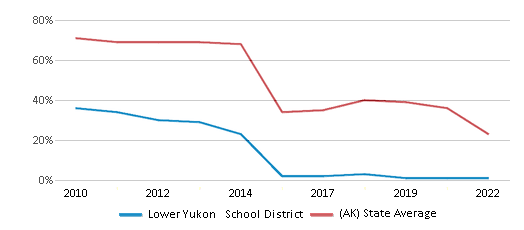
Reading/Language Arts Test Scores (% Proficient)
≤1%
29%
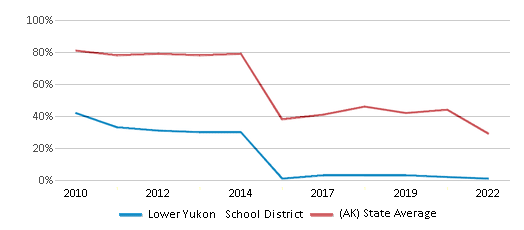
Science Test Scores (% Proficient)
4%
38%
Graduation Rate
65-69%
78%
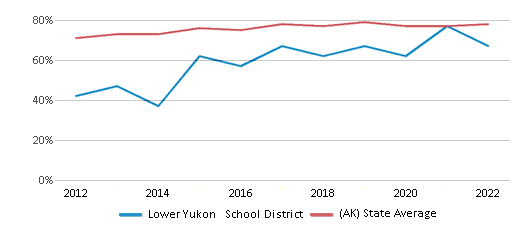
Students by Ethnicity:
Diversity Score
0.05
0.57
# American Indian Students
1,995 Students
1,068 Students
% American Indian Students
98%
13%
# Asian Students
2 Students
109 Students
% Asian Students
n/a
1%
# Hispanic Students
1 Student
596 Students
% Hispanic Students
n/a
8%
# Black Students
2 Students
104 Students
% Black Students
n/a
1%
# White Students
3 Students
5,022 Students
% White Students
n/a
63%
# Hawaiian Students
n/a
67 Students
% Hawaiian Students
n/a
1%
# Two or more races Students
42 Students
1,054 Students
% of Two or more races Students
2%
13%
Students by Grade:
# Students in PK Grade:
96
17
# Students in K Grade:
182
798
# Students in 1st Grade:
166
801
# Students in 2nd Grade:
132
800
# Students in 3rd Grade:
165
785
# Students in 4th Grade:
148
813
# Students in 5th Grade:
156
790
# Students in 6th Grade:
159
845
# Students in 7th Grade:
162
700
# Students in 8th Grade:
156
674
# Students in 9th Grade:
136
262
# Students in 10th Grade:
111
265
# Students in 11th Grade:
123
229
# Students in 12th Grade:
153
241
# Ungraded Students:
-
-
District Revenue and Spending
The revenue/student of $32,462 is higher than the state median of $20,163. The school district revenue/student has stayed relatively flat over four school years.
The school district's spending/student of $37,831 is higher than the state median of $21,240. The school district spending/student has stayed relatively flat over four school years.
Total Revenue
$66 MM
$2,630 MM
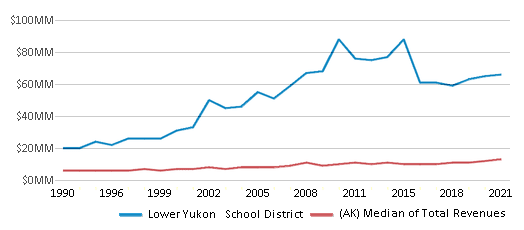
Spending
$77 MM
$2,771 MM
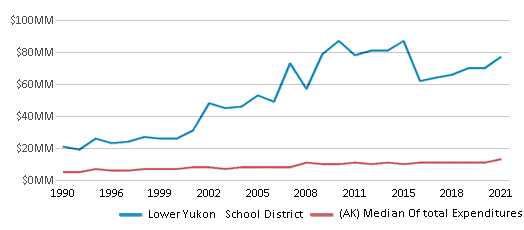
Revenue / Student
$32,462
$20,163
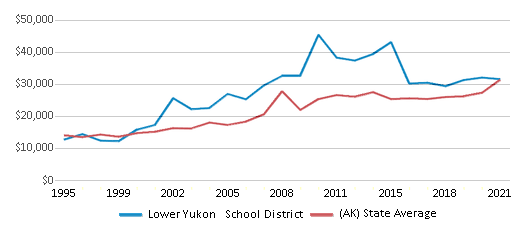
Spending / Student
$37,831
$21,240
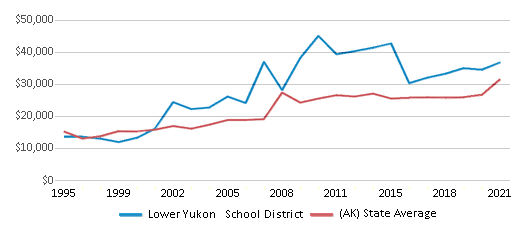
Best Lower Yukon School District Public Charter Schools (2025)
School
(Math and Reading Proficiency)
(Math and Reading Proficiency)
Location
Grades
Students
Rank: #11.
Hooper Bay Charter School
Charter School
(Math: ≤10% | Reading: ≤10%)
Rank:
Rank:
2/
Bottom 50%10
83 School Road
Hooper Bay, AK 99604
(907) 758-1200
Hooper Bay, AK 99604
(907) 758-1200
Grades: 4-8
| 68 students
Recent Articles

Year-Round Or Traditional Schedule?
Which is more appropriate for your child? A year-round attendance schedule or traditional schedule? We look at the pros and cons.

Why You Should Encourage Your Child to Join a Sports Team
Participating in team sports has a great many benefits for children, there is no doubt. In this article you will learn what those benefits are.

White Students are Now the Minority in U.S. Public Schools
Increasing birth rates among immigrant families from Asia and Central and South America, combined with lower birth rates among white families, means that for the first time in history, public school students in the United States are majority-minority. This shift in demographics poses difficulties for schools as they work to accommodate children of varying language abilities and socio-economic backgrounds.





